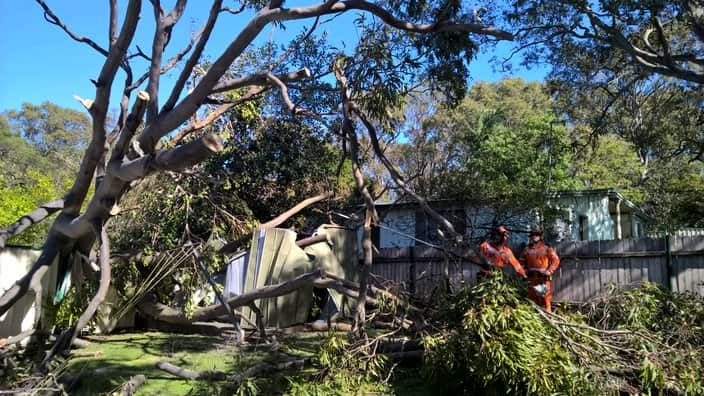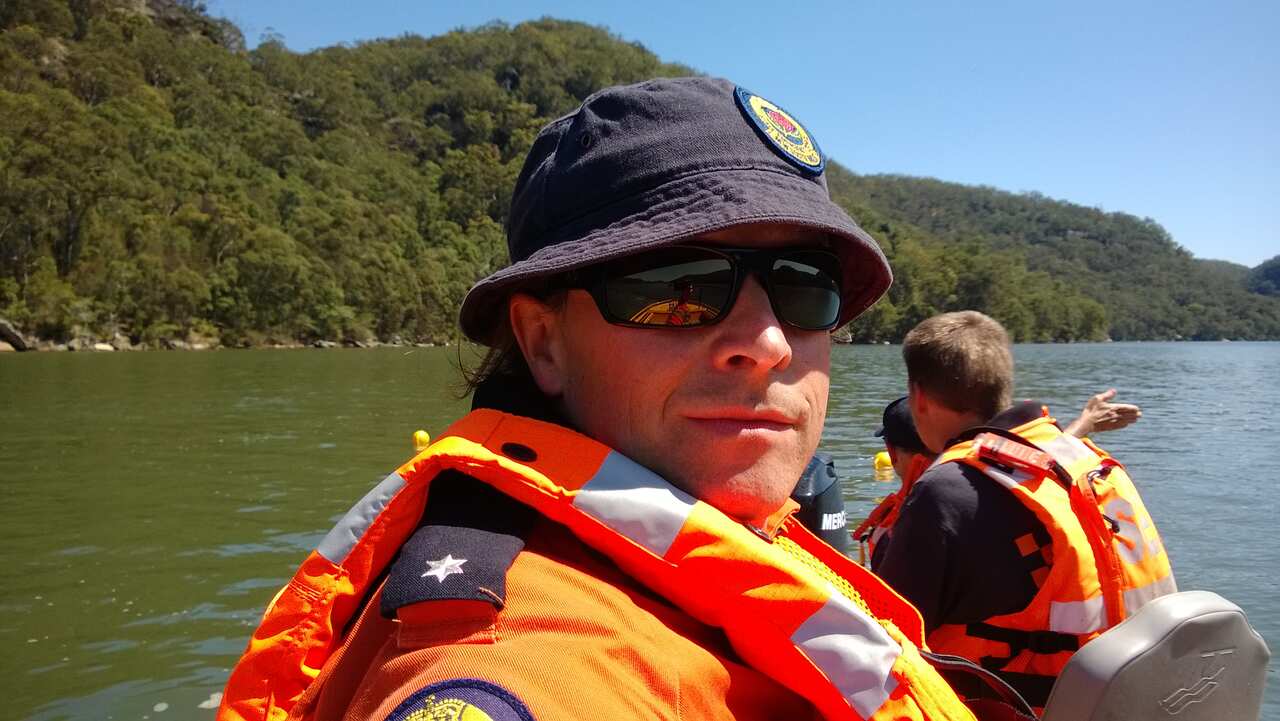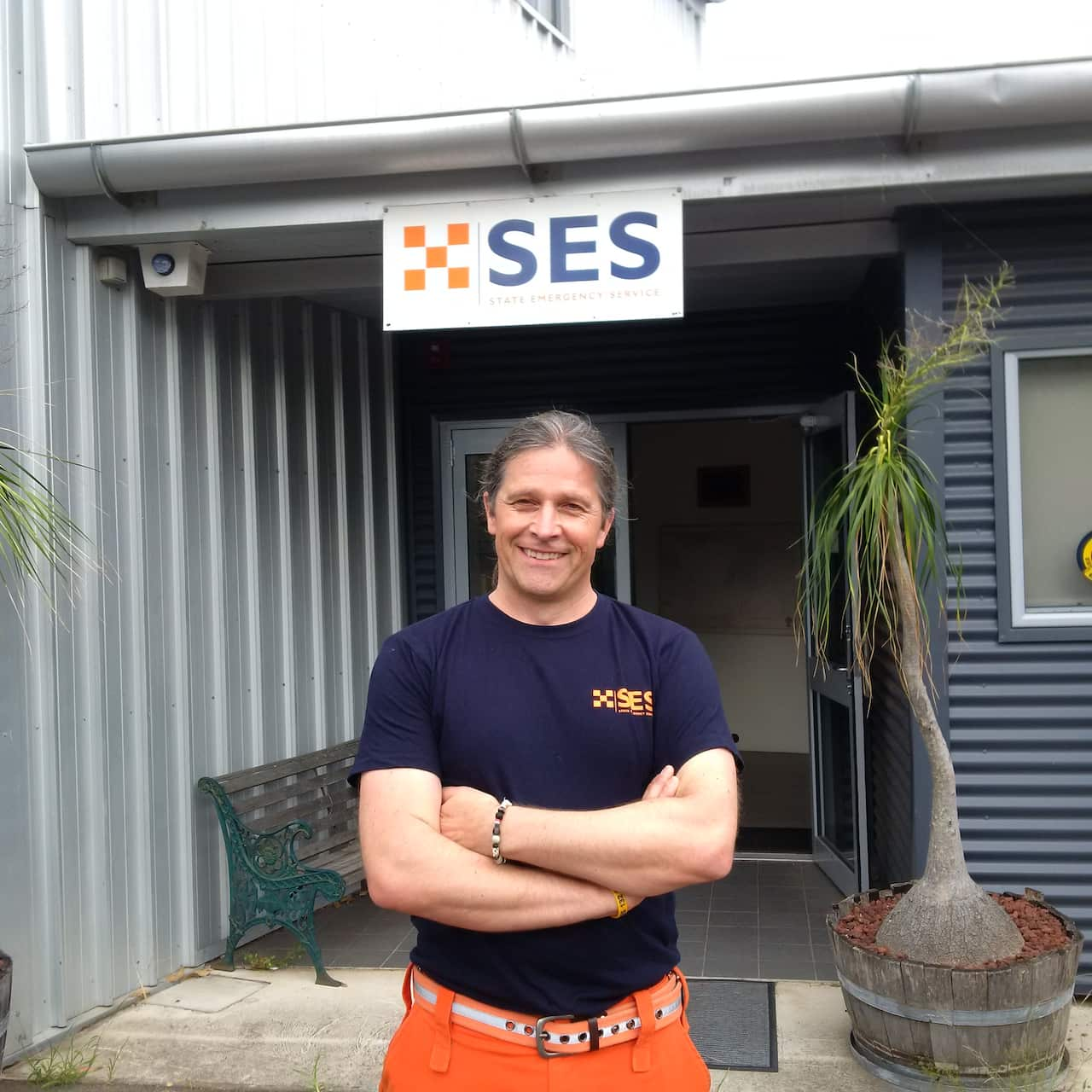Hardly a month goes by without Australians experiencing the worst in nature.
Storms, cyclones, devastating bush fires and floods pose frequent challenges to many communities around the country. Groups like the State Emergency Services (SES) play a key role in ensuring the safety of all Australians.
Joerg Lindner has always been interested in helping people and after he migrated from Germany a few years ago, he didn’t wait long to join the SES.
“I have always been interested in helping people in emergencies. I thought that was more useful than military service in Germany. Shortly after I came to Australia, I saw an SES truck in my street and started a conversation with the driver. What he told me about his job totally convinced me that I wanted to join too. For me, this chance meeting was a dream come true.” And since joining, Lindner has worked to help his local communities recover from difficulties including recent devastating storms, as well as travelling to Queensland to help in the massive floods.
And since joining, Lindner has worked to help his local communities recover from difficulties including recent devastating storms, as well as travelling to Queensland to help in the massive floods.

Source: J. Lindner
“During the recent inundations in and around Townsville, NSW sent crews with flood boats to assist our SES colleagues in Queensland which ensured the safety of many people in distress in that state.”
For him, becoming a volunteer member of the Manly branch of the NSW SES was a good opportunity for him to find new friends as well as help the community.
“There are people with interesting professional backgrounds in the SES. It’s all very diverse, and the other aspect that’s very enjoyable is that you can meet a lot of different people which is particularly important for recent migrants like me. SES has helped me to find friends for life.” As the primary responders for storm and flood events, the SES also provides support to other agencies such the Police through search and rescue operations, emergency traffic management, and road crash rescue.
As the primary responders for storm and flood events, the SES also provides support to other agencies such the Police through search and rescue operations, emergency traffic management, and road crash rescue.

Source: J.Lindner
Lindner says volunteers come together for regular training evenings and some clean-up deployments after disasters can last up to two weeks.
He says volunteering with a state emergency service is an exciting and rewarding experience as a friend of his also recently found out.
“He [Lindner’s friend] stood in floodwater and watched how all the spiders crawled up his legs – that’s how they tried to rescue themselves – and he thought that was fantastic,” says Lindner. “He realised there and then what he was doing and that he was working for a purpose.”
Not everybody who joins the SES has to be in a scary frontline job. There are many important tasks in logistics, equipment maintenance and dispatch that also make a difference in the lives of others.
“Everybody can join us and contribute,” says Lindner. “We have situations where we are out on the job over several nights – particularly during severe storm events – and there’s enough work in the background to be done. This is not just guys who are super-fit. This is for everybody who wants to help.” Lindner says the SES would like to recruit more women and more volunteers from multicultural communities.
Lindner says the SES would like to recruit more women and more volunteers from multicultural communities.

Joerg Lindner, SES volunteer Source: W.Mueller
“We would like to have a higher number of women and more volunteers from ethic groups – no matter what religion or minority. We welcome more diversity.”
A language other than English, says Joerg Lindner, can be a great asset in an emergency situation which involves the rescue of a recent arrival or refugee.
“In such a situation, we would be happy to have somebody in our team who speaks a second language or understands certain cultural differences which would help us to be less intrusive in our actions.”
SES volunteers must be at least 16 years of age but there is no upper age limit. Retirees are particularly welcome, says Lindner.
“We’re very interested in retired people. Why? Because these are people who probably have the time to go out on jobs when the other volunteers are at work or in school. We would be very happy to have more mature aged people on board as we already have very good seniors in our ranks.”
